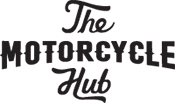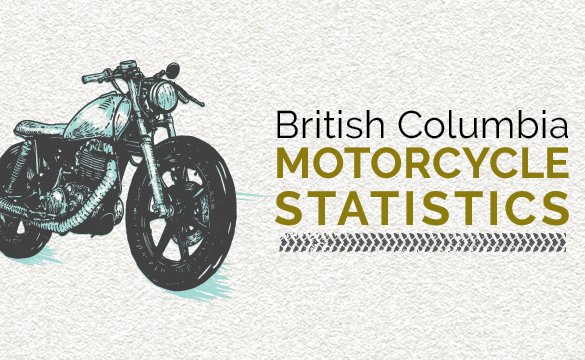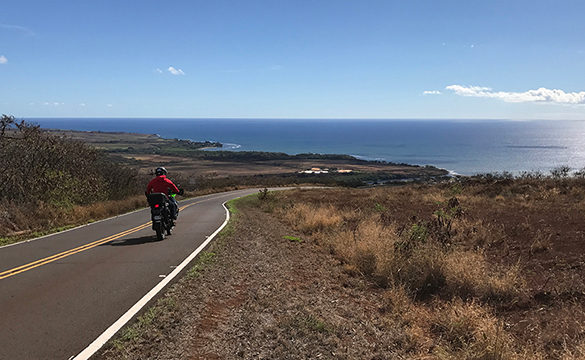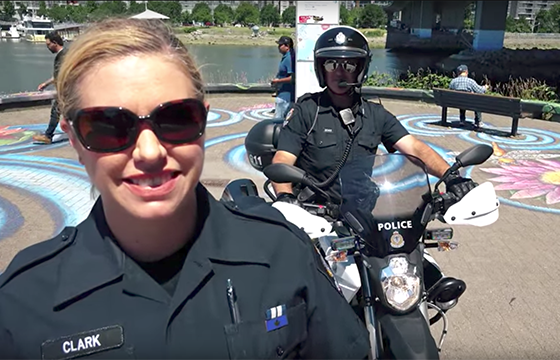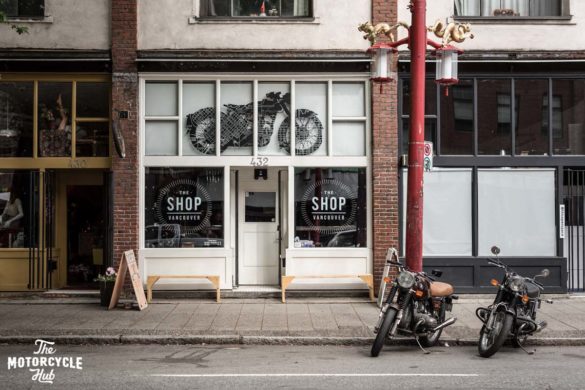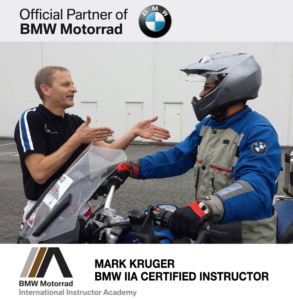
Photo Courtesy of Pacific Riding School
How adventurous are you? If you ride a motorcycle, some people already think you’re pretty adventurous. But if you’re only staying on paved roads, you’re missing out on some incredible remote places—places where the journey there is the real adventure. In BC, there are lots of fascinating, off-the-beaten-track places you can ride to in just a few hours—if you have an enduro motorcycle capable of riding on rough terrain.
But don’t think that just because your bike has the ability to get there, that means you have the ability to get there. If you’ve recently purchased your first enduro motorcycle—or have only ridden your enduro on paved roads—before you head to the hills, it is strongly advised that you first get trained by the professionals.
Mark Kruger, who teaches at Pacific Riding School (PRS) in Surrey, is one of two BMW-Certified enduro teachers in BC. I recently had the opportunity to speak with Mark and asked him some questions about his background and the course at PRS.
What is your riding background, and how did you become an instructor?
My riding background is road racing. I started road racing in 1998 for Suzuki Canada, and during that 10-year tenure with them, I achieved eight Superbike Championships for British Columbia, and placed as high as third in Canada for road racing. In 2006, I took those credentials and started up PRS. Being that I have road racing experience, and know how to manipulate the physics of the bike, I figured that would be a good attribute when you’re opening up a riding school for brand-new riders to learn to get their ICBC class 6 licence.
In doing that, I realized that just because you know how to do it, doesn’t mean you know how to teach it. So I teamed up with a business partner named Dat Louie. He’s got his bachelor of education degree; he’s a teacher by trade, and he’d already been teaching motorcycle riders for about 15 years prior to me teaming up with him. So Pacific Riding School is kind of a combination of a road racer and an educator, and that seems to be the combination that really allowed the school to take off. As of this last year, we’re by far the largest school in British Columbia, and have been established for over 10 years.
During the last 10 years after my road racing career, I’ve competed in enduro racing, which is primarily at a place called Blue Mountain in Maple Ridge, and the specific area of the mountain is called McNut. Now McNut has a reputation for being the hardest place to ride your dirt bike in British Columbia. So I started my learning process there to get my training up to a place where I could handle putting on a course.
You recently achieved BMW accreditation to instruct the enduro course at PRS. What was that experience like?
BMW Canada figured I would be the best fit to represent BMW in an enduro course because of my educational background, my instructional background and my skillset, so BMW Canada sponsored me to go to Germany in the factory at Munich. They sent me over last August to be trained with the top riders around the world. There were 22 of us—I was representing Canada—and they had riders from Japan, Paraguay, Spain, all over the world show up.
When I showed up at their training site, my first impression was that I was way in over my head, because these guys were very extreme. They put us on motorcycles called GS1200s, which is about a 600-pound on-off road dirt bike. Now physically, I’m only 160 pounds soaking wet, so the intimidation factor was immediate. However, through the course that BMW put on, which qualifies you to be an instructor of enduro riding, in partnership with BMW, they train quite well. The skillset came along well.
Some of the tests that I had to perform on the last day to prove my skill were extreme. Thirty-five degree inclines and declines that are two to three storeys high. Doing a slalom set through gravel,that was extremely tight for the big bike. Going into the slalom in a ditch, coming out of it on the side of a mountain. Also going into a square box five metres by five metres, doing 360-degree turns in gravel on this 600-pound bike—it became really challenging.
You had 16 manoeuvres to do. One mistake, whether you put your foot down or crash the bike—it had the same value, and that would mean you would fail that manoeuvre. Out of 16 manoeuvres you were allowed four mistakes, and if you hit four mistakes you failed the whole entire course.
Out of the 22 riders selected all across the world, six riders failed the course, so I felt very privileged not only to be selected by BMW, but also very privileged to be able achieve the accreditation.
What are the most common mistakes made by new riders?
New enduro riders make two common mistakes. The first common mistake is they always look at the object that they’re trying to avoid. That’s an instinctual mistake. The second is much less well known: People use the handlebars to steer the motorcycles through rough terrain, and the handlebars are the last thing you want to use to steer the bike. You want to use the footpegs to steer the bike, and use the handlebars to balance the bike in combination with the throttle. So using the handlebars to steer and looking at the object they’re trying to avoid, those are the two most common mistakes.
Designed for beginner and intermediate enduro riders, Mark’s two-day course at PRS incorporates three hours of class time covering hazards and safety, how to set up an enduro bike and the physics of riding. The enduro riding (seven hours) covers slalom, steering lock, up/down hills, stalling, compression drive, uphill acceleration, parallel locks, raised beam and braking.
For more information about this course, contact Pacific Riding School.
For more information about other motorcycle training options in British Columbia, visit our business directory.
